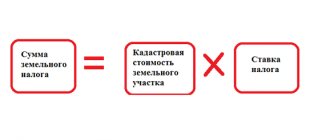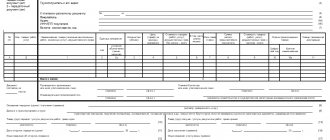How to register the addition of a land plot in accordance with the Land Code
The Land Code does not contain such a concept - the addition of a land plot. Redistribution of land plots is commonly called redistribution. According to the general rules for the formation of land plots (Article 11.2 of the Land Code), there are several types of formation of new land plots:
- Allocation;
- An association;
- Redistribution;
- Chapter.
In the article we will not consider each of these types in detail, but we will talk in more detail about redistribution, or more precisely about how the addition of a land plot in 2021 occurs due to the area of adjacent lands, and how the size of a land plot can be legally increased.
General rules and legal grounds
The procedure for redistributing the territory of a land plot absolutely always takes place on a reimbursable basis. According to Russian Government Decree 1308 of December 3, 2014, there are rules that control the procedure for determining the amount of payments for increasing the area of owned land.
The payment amount is 15% of the total cadastral value of the land. The maximum area by which the size of the plot can be increased is also established by regional laws. Accordingly, the meaning may differ in different regions of the country.
The procedure is formalized using a special agreement on redistribution. It must be signed by two parties: the individual who is the owner of the plot being changed, and the person whose land is being “cut”. The second party is most often a representative of the municipal administration or regional government. It is impossible to carry out the expansion procedure at the expense of privately owned land.
After the expiration of the specified period, the regional or municipal body with the appropriate powers must make a decision. According to the provisions of the state Land Code, refusal to redistribute land must be justified by reasons.
If a positive decision is made, the land owner carries out all land surveying operations at his own expense. Upon completion of the work, an agreement to change the land area can be signed.
The owner of a land plot cannot file a claim for redistribution of the land plot just like that.
Read more: Codes of defects in the provision of medical care compulsory medical insurance 2018
According to Article 39.28 of the Land Code of the Russian Federation, this can happen on the following grounds:
- the purpose of changing the area of the territory is to align the boundary plan with a special one established at the local level;
- the purpose of the manipulation is to eliminate striping and distortion of the perimeter of the site;
- in the event that the plots that will appear as a result of changing the land area will be used for private farming and gardening, the restriction is that the new plot must have a minimum area size;
- when part of the land plot must be used in capital construction in accordance with state or municipal plans.
New law on land acquisition 2021
Laws in the field of land management and cadastre have undergone active changes in recent years. The new law on the addition of land plots, effective in 2021, is a whole layer of rules affecting the formation of land plots. At the beginning of 2019, Federal Law 217 on horticulture came into force, changing the basic concepts and definitions of summer cottages. On June 17, 2021, a new law 150-FZ was adopted, amending the laws on cadastral activities and real estate registration (218-FZ and 221-FZ). The changes concern complex cadastral works: the procedure for carrying them out is simplified, while it remains possible to increase the land plot up to 10% of its total area if, during the complex cadastral works, it turns out that in fact the plot is larger than on paper. The State Duma is also considering a number of amendments to simplify the procedure for registering land plots and buildings (the dacha amnesty will be extended until 2022).
Only the owner can add additional acres to his plot. Tenants of land plots, as well as persons who own land plots for free use, do not have this opportunity.
Sanctions for illegal land seizure
Cases of illegal seizure of land are established by Art. 7.1 Code of Administrative Offences. If fraudulent aspects are identified, the case may fall under the criminal code. With this option, the offense faces much more serious consequences than just a fine and seizure of the site. In the absence of fraudulent activity, the violator will most likely pay a fine. Its size depends on several factors:
- whether the plot is registered in the cadastral register;
- What is the estimated value of this plot of land?
How to officially legitimize the expansion?
First of all, it is necessary to obtain ownership of the main plot, if this has not been done previously. It is possible to legalize an increase in the area of a land plot after setting boundaries and registering the main plot with cadastral registration. According to a simplified procedure, the following documents are submitted to Rosreestr:
- Passport;
- Statement of the established form;
- Cadastral passport for the plot;
- Document of title on the basis of which property is acquired (sale and purchase agreement, privatization deed, deed of gift, certificate of inheritance);
- Receipt for payment of state duty.
After registration, an extract from the Unified State Register is issued, which shows the ownership of a certain plot.
Geodetic works
After receiving the property documents for the main plot, you need to carry out land surveying. For this purpose, a licensed cadastral engineer or employees of a geodetic company are invited. As a result, the owner receives a land surveying project and a layout plan for the expanded site.
The specialist must make sure that there are no claims to the territory by third parties and that it is not owned by another landowner. Measurements are taken and boundaries are set so that there is no overlap with neighbors' territory.
It is important to make sure that there is no conflict or disagreement on their part regarding the passage of borders. As a result, a boundary plan and an act of completion of work are prepared, in which the owners of adjacent plots, if any, must sign. If everything is in order, you can proceed with further paperwork.
Read more: Accounting and tax accounting of leasing operations
Application to the administration
The owner must contact the administration responsible for the distribution of land in his area. You must submit an application and attach title documents for your site and a boundary plan. If the application is filled out incorrectly, does not correspond to information from the documents, or is submitted to the wrong authority, it will be returned within 10 days with an indication of the reason. If everything is correct, the issue of land allocation is considered within 30 days.
During this time, the municipality makes a decision on approving the site layout. The owner receives consent to conclude an agreement on the redistribution of plots in accordance with the approved boundary plan. Before the expiration of the 30-day period, a redistribution agreement is signed.
Changing the boundaries of the site
Next, the boundaries are clarified, for which it is necessary to complete the registration steps. Otherwise, at the official level, it will be impossible to be considered the owner and fully manage the new territory. To do this, the following documents are submitted to Rosreestr:
- Statement;
- Extract from the Unified State Register of Real Estate;
- Title document for land;
- Passport;
- Land surveying project;
- Layout of the expanded section;
- Positive decision of the administration to allocate a new territory.
Upon completion of the work, the applicant receives an extract from the Unified State Register of Real Estate with the new configuration of the site and area. In fact, you have to carry out the entire range of work at your own expense, including cadastral work. This is convenient for state and municipal authorities, since they do not have to spend budget funds, and taxes are received into the budget.
Payment amount
According to Art. 39.28 of the Land Code of the Russian Federation, the amount of payment for the added plot is established by state, regional or municipal authorities. It depends on the territory. To calculate the full payment, the indicators of cadastral value, total area and connection payment as a percentage of the cost are used.
You can find out the cadastral value yourself if the plot is in the real estate register. To do this, you will need a conditional or cadastral number and the exact address of the location. If you don’t have time to search for a site yourself in the database, you can send an electronic request to Rosreestr. In most cases, a small part of the unused plot is added, so about 15% of its cadastral value is paid.
Please note that payment for the increase in the plot is not allowed in installments or with a deferment. It is important to apply if you already have funds to purchase the plot.
Costs are significantly lower than market value for the following reasons:
- The site is usually expanded due to ownerless land;
- The occupied territory is fenced off long before official registration, which is actually considered squatting;
- Cadastral valuation is carried out according to a special algorithm, as a result of which the value is lower than the market value.
Despite the low cost, in many cases you have to pay for cadastral work. The cadastral engineer prepares a conclusion that may cost more than the attached plot.
How to legalize the addition of a plot of land for free
Attaching a land plot to the main one is an increase in the size of the land plot at the expense of adjacent lands. Not every owner is aware that he can legally register an addition to a land plot and receive additional land ownership free of charge. How to legalize the cutting of a plot of land for free, you ask? In fact, the law allows the increase of a land plot by no more than 10% of its area at the expense of municipal lands. But there are also caveats. It is important that the land is not privately owned and under encumbrances; in addition, local authorities have the right to legally establish additional restrictions on the size of the addition of land plots. In any case, the registration of the addition of a land plot should be legalized by submitting the necessary documents to the Rosreestr authorities.
Procedure for registration of “cut-offs”
Owners of land intended for gardening, vegetable gardening, individual housing construction, country houses and personal subsidiary plots have the right to submit such applications.
There are three main restrictions:
- The maximum lot size established for a given permitted use and for a given area shall not be exceeded. That is, the new allotment formed after the addition of the “addition” cannot be larger than the approved limit.
This is interesting: Legalization of unauthorized buildings in Moscow
Such requirements are prescribed in the rules of development and land use for all territories and apply to any “redistributed” site that falls within the boundaries of the relevant municipality. Such norms are in force from the moment they are approved by local deputies by their decisions. In particular, for the Volokolamsk district of the Moscow region, the necessary Decision of the Council of Deputies was adopted on July 15, 2004 under number 61-8 (as amended on November 3, 2006).
- The newly formed site must be located within the boundaries of one settlement or municipal entity (according to the Land Code of the Russian Federation, Article 11.9, paragraph 3).
- The procedure for the official annexation of additional land can only be carried out if the original plot has precisely established boundaries and information about this is entered into the cadastre (according to the Land Code of the Russian Federation, Article 39.29, paragraph 9, paragraph 10).
Registration of “additions” is carried out on the basis of an agreement between the authorized body (municipal structure whose competence includes the disposal of state lands) and the applicant. In the Moscow Region, such rights are vested in the Government of the Moscow Region and the state departments that were entrusted with such responsibility (according to Law of the Moscow Region No. 106 of July 24, 2014). Those wishing to expand their plot using municipal land should contact these authorities. At the same time, they should draw up an application, submit title documents (copies) for the corresponding plot, as well as a project for surveying the territory to which the plot belongs (according to the Land Code of the Russian Federation, Article 39.29). If there is no land surveying project, then the applicant must order the production of a plot location diagram at his own expense. Such a document is carried out by a cadastral engineer using geodetic survey data (according to the Land Code of the Russian Federation, article 11.3).
The decision to approve a new plot layout or refusal to formalize an accession agreement is made by the authorized body within 30 calendar days from the date of submission of all documents. A detailed list of grounds for refusal is contained in the Land Code of the Russian Federation (Article 39.29, paragraph 9).
For example, citizens are not allowed to “cut” plots whose turnover is limited, which are put up for auction or reserved for municipal and federal needs. When redistribution affects the rights of owners, users, tenants or mortgagees of land, the procedure is possible only after obtaining their consent. However, the Land Code of the Russian Federation does not contain rules for resolving disputes between several applicants for the same plot.
If the authorized body makes a positive decision on the official redistribution of land, its owner should organize the cadastral registration of the newly formed plots and pay for the corresponding services (according to the Land Code of the Russian Federation, Article 39.29, paragraph 11).
After issuing a cadastral passport, it must be submitted to the authorized body. Then a redistribution agreement is drawn up, which is certified by a representative of the municipality and sent to the applicant. The citizen is given 30 days to review the received document and sign it (according to the Land Code of the Russian Federation, Article 39.29). Payment for the annexed plot in the amount of 50% of its cadastral value is made no later than one month from the date of signing the agreement. The law does not provide for deferment or installment payment.
This is interesting: Postings in land tax accounting
Legal offers comprehensive services for the transfer into the ownership of clients of land plots owned by municipalities (“additions”).
Our work includes:
- topographic survey;
- drawing up a site layout diagram and its approval by all authorized authorities;
- preparation and submission of a package of documents necessary to obtain ownership rights in relation to the newly formed allotment;
- land surveying, cadastral registration of the formed area;
- official registration of the transfer of ownership (registration is carried out by the Volokolamsk department of Rosreestr for the Moscow region);
- receiving ready documents.
What documents are needed to approximate a plot of land?
The desire to increase the land plot is not enough; action must be taken. To begin with, find out from the local authorities the nuances of restrictions on the size of the addition of a plot of land in your area, and what documents are needed for the addition of a plot of land in your municipality.
The main documents are:
- Application for cutting (redistribution)
- Agreement
- Extract from the Unified State Register of Real Estate
- Land surveying project or site layout diagram
- Title documents for land.
What is a cut-in?
An increase in land allotment is considered to be the expansion of the boundaries of the existing territory at the expense of unauthorized annexed lands that are located nearby. Since the number of unauthorized plots was increasing, the government decided to legalize and regulate the cutting process.
Attention. If you have any questions, you can consult with a lawyer for free by phone in Moscow, St. Petersburg, and all over Russia. Calls are accepted 24 hours a day.
To regulate the processes of land cutting, the Government of the Russian Federation introduced amendments to the Land Code, which came into force on March 1, 2015. As a result, Chapter V.4 appeared in the Land Code, regulating the acquisition of land , which was renamed the redistribution of territories, and allowing the legalization of unauthorized occupied plots . Therefore, the concept of redistribution of land plots is the addition of an allotment on a legal basis.
After March 1, 2015, a citizen who owns a plot of land that is intended for performing activities related to vegetable gardening, horticulture, agricultural activities, and individual construction can apply to the Authorized Body (AU) for the redistribution of municipal land. The redistribution procedure under the new legislation is carried out in accordance with Chapter V.4, Art. 39.29 ZK .
Procedure for registration of cutting
When adding land to a site, the procedure is as follows:
- Writing an application . You can view and download here: [ sample application for the addition of a land plot ]. This document is the basis for starting the process of cutting off a plot and concluding an agreement for the redistribution of land. The application states (clause 2, article 39.29 of the Land Code):
- passport data (document number, place of registration, full name) of the applicant-citizen or name, INN and registration number in the Unified State Register of Legal Entities for the applicant legal entity. faces;
- cadastral numbers of land plots that will participate in the cutting process;
- details of the project for land surveying (if the cutting will be carried out in accordance with it);
- postal address (regular or electronic) for feedback from the applicant.
- Collection of necessary documents . The required documentation package includes:
- a copy of the title or title documentation for the land plot that belongs to the applicant. Provided in a situation where the right to own the plot is not registered in the state register of real estate rights;
- power of attorney, if the interests of the applicant are represented by a trusted citizen;
- translation into Russian of the certificate of state registration of legal entities. a person certified by a notary is provided in a situation where the applicant is a foreign legal entity. face.
- Submitting an application and a package of documentation to the MA ( clause 5, article 39.29 of the Land Code ). Documentation can be submitted in paper or electronic form.
- Consideration of the application. Within 10 days after submitting the application, the documentation is reviewed by the MA for errors. If, when submitting documents by the applicant, there were violations of the requirements approved by clauses 2-3, art. 39.29 of the Land Code , then the MA has the right to return the application to the applicant.
- Providing a verdict on the application. At the end of (or within) 30 days from the date of submission of documentation, the MA must perform one of several actions:
- make a decision approving the layout of the land plot and send the verdict to the applicant;
- send the applicant consent to draw up an agreement on cutting off the allotment, in accordance with the current project for land surveying;
- refuse to sign an agreement on the addition of an allotment on one of the grounds specified in clause 9, art. 39.29 ZK.
- A citizen whose application is satisfied ensures that cadastral work is carried out for the purpose of state registration of land plots that appear as a result of the addition. To do this, the citizen will need to submit an appropriate application and a cadastral passport for the plot to the cadastral authority.
- Within a month after submitting the application, the cadastral service draws up a draft agreement on the cutting of the allotment and sends it to the applicant for signing. The applicant must sign the agreement within one month of receiving it.
- After signing the agreement, ownership of the resulting plot should be registered in Rossreestr. The procedure for registering an allotted plot is similar to registering a plot purchased or received as a gift.
Read more: Residence permit in Greece when purchasing real estate
Trim registration price
The Government of Russia, by Decree No. 1308 of December 3, 2014 , which came into force on March 1, 2015, approved the rules for setting prices for the addition of a land plot . According to the resolution, the function of determining the amount of payment for the redistribution of plots is assigned to the federal executive body, which exercises the powers of the owner of land territories that are federal property.
The amount of the additional fee is equal to 15% of the cadastral price for the municipal plot, which becomes the property of the citizen (clause 3 of the Rules for determining the amount of the additional fee, approved by Resolution No. 1308). The cadastral value can be found out from the cadastral passport of the land, from the local administration or from the public cadastral map of Rossreestr.
An example of cutting off a plot of land
Alexander Aivazovsky, living in the city of Zlatoust, Chelyabinsk region, decided to annex adjacent land to his land plot . The adjacent territory was part of municipal plots and was leased from Mr. Radchenko (who used the plot for growing crops).
Aivazovsky turned to a lawyer to clarify how to register an addition to a land plot in 2021 . Having received the necessary information, the citizen wrote an application for the addition of a municipal allotment and submitted it to the city administration for land issues. Along with the application, a copy of the title document for the land owned by Aivazovsky was presented.
24 days after submitting the application, the Administrative Office decided to refuse citizen Aivazovsky’s application. The refusal followed on the basis of clause 2, clause 3, art. 39.29 of the Land Code (lack of written consent to the cutting of landowners, land users or tenants). In this case, there was no permission for the cutting from the tenant Radchenko.
Conclusion
To summarize the article, several key points should be highlighted:
- The basis for cutting the allotment is a written application submitted to the local administrative authority.
- Within a month, after accepting the application, the MA issues a verdict, either refusing or agreeing to cut off the site.
- The fee for the addition of land is set at 15% of the cadastral value of the plot that will be annexed.
The most popular questions and answers to them regarding the cutting of land
Question : My name is Vasily Petrovich. I live in the village of Yartsevo, Smolensk region, in my own house. My house is on a plot of 15 acres. I have a small orchard in my yard. Near my yard, on the side where the fruit trees grow, there is a small municipal free area of 1.5 acres. I have a question: “Do I have the right to legally add 1.5 acres of municipal land to my plot for growing fruit trees?”
Answer : Vasily Petrovich, paragraph 3 of Article 39.28 of the Land Code, you are allowed to add municipal land to your allotment, which will be used for gardening.
Increasing the area of a land plot while clarifying the boundaries is a necessary procedure that many owners come to. Landowners often go over the allotted area, especially if the plot is small. The procedure is permitted if the rights of neighbors are not violated, and the land does not belong to the territory of national parks and protected areas.
Time limits for consideration of an application for subdivision of a land plot
The Land Code (Article 39.29) establishes the following deadlines for consideration of an application for the addition of a land plot:
- total period 30 working days
- extension of the period to 45 working days (if additional documents are needed)
- The deadline for returning an incomplete set of documents is 10 days .
After the application is accepted, an agreement is concluded that the municipality is not against increasing your land.
How to add land to an existing site
The redistribution of territories is carried out through the consistent implementation of measures, the implementation of which can guarantee a positive result:
- Drawing up and submitting an application. It should contain the following information:
- passport details of the applicant or details of a legal entity;
- cadastral numbering of land areas involved in the addition;
- information about the land surveying project (if it will be carried out on the basis of the project);
- contact details of the person applying.
- Preparation of the necessary documentation. Send it along with the application to the local municipality. Papers can be sent electronically or on paper.
- Consideration of the appeal and making a decision on it. In the absence of violations of the requirements established by land legislation, a decision may be made to approve the land layout plan. In this case, the applicant is sent approval for the execution of an agreement on the annexation of additional land based on the survey project. Municipal authorities may refuse to redistribute land for the reasons established in paragraph 9 of Art. 39.29 of the Land Code of the Russian Federation.
- After receiving approval, the person ensures that the necessary work is carried out to account for the land objects created as a result of the increase. To do this, you must contact the cadastral chamber with a corresponding application.
- Within one month, an agreement on the accession of additional space is prepared and sent to the applicant for signatures. This must be done no later than thirty days.
- The signed agreement must be submitted for registration to Rosreestr and an extract from the unified register must be obtained confirming the owner’s rights to the newly formed plot.
This is interesting: Traffic rules in the local area
Increasing the area of land - is it free or for money?
There is an opinion that increasing the land plot can be done completely free of charge, but this is not so. It is only possible to obtain the adjacent lands for free, that is, they do not need to be purchased from the state, and the very registration of the new formation in the form of an enlarged land plot after the addition is a procedure that requires monetary costs. Indeed, in order to document newly created possessions, it is necessary to prepare a boundary plan. To do this, we enter into an agreement with a cadastral engineer, naturally on a paid basis. The newly created site must be coordinated and a ready package of documents must be submitted for registration to the MFC. All this time and money, but as a result you will receive a legally registered plot with an increased area.
You can find out the cost of the boundary plan using a free service on the website - an online calculator for cadastral works; we also suggest that you familiarize yourself with the catalog of companies in your region that provide cadastre services on the website.
Instead of a conclusion, or Putin’s opinion on the addition of a plot of land
Vladimir Putin allowed Russians to register surplus land. This benefits both the state and the ordinary citizen. By signing 150-FZ dated June 17, 2019 (the law came into force on September 16, 2019), the president thereby expressed his opinion on the appropriation of land plots and confirmed the need to simplify cadastral work, which, according to the deputy head of the cadastral chamber, Marina Semenova, will have a positive impact on land owners. The registered plots will now officially be the property of citizens - which will increase revenues to the treasury through land taxes, and citizens, in turn, will be able to own plots not only in kind, but also legally.









